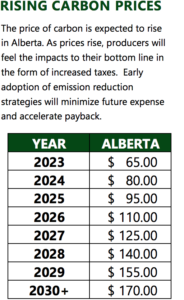 Carbon offsets are a way for individuals or companies to mitigate their carbon footprint by investing in projects that reduce greenhouse gas emissions.
Carbon offsets are a way for individuals or companies to mitigate their carbon footprint by investing in projects that reduce greenhouse gas emissions.
The idea is that if you cannot reduce your own emissions, you can support someone else to reduce theirs on your behalf.
There are two types of carbon offsets:
Emission Reduction offsets
In this type of offset, the company invests in projects that reduce or remove greenhouse gas emissions. For example, a company can invest in a wind farm or a solar power plant, which generates renewable energy that displaces fossil fuel-based power generation, and hence reducing greenhouse gas emissions.

Carbon Capture offsets
In this type of offset, the company invests in projects that capture greenhouse gases from the atmosphere, such as reforestation projects or carbon capture and storage (CCS) projects.
Oil & Gas firms, which are major emitters of greenhouse gases, are increasingly using carbon offsets to offset their emissions. They invest in emission reduction and carbon capture projects to mitigate their carbon footprint. By investing in these projects, oil and gas companies can claim to be contributing to the fight against climate change and also reduce the risk of regulatory penalties, reputational damage, and investor backlash.
Carbon offsets are important to oil & gas firms because they allow them to demonstrate their commitment to reducing their carbon footprint without necessarily reducing their own emissions. However, it is important to note that carbon offsets should be seen as a temporary solution while companies transition to low-carbon energy sources and ultimately, decarbonization.
How common are carbon offsets in the oil & gas industry?
Carbon offsets are becoming increasingly common in the oil & gas industry. Many oil and gas companies have made public commitments to reduce their carbon footprint, and carbon offsets are one way for them to achieve these targets.
As the chart to the right shows, the cost of carbon is rising and as prices rise, producers will feel the impacts to their bottom line in the form of increased taxes. Early adoption of emission reduction strategies will minimize future expense and accelerate payback.
In Canada, current emissions regulations can be viewed by clicking here. Here are ways you can take part in the current D60 program.
CATEGORY 1: CONSERVATION
Includes injection to pipeline or on-site use for stationary combustion as fuel gas and for on-site power generation. Eligible for 8-year crediting period with potential extensions or 10-year with no potential extensions.
CATEGORY 2: DESTRUCTION
Includes incineration and existing flare tie-ins. Eligible until 30/09/2025. INELIGIBLE PROJECTS: Includes baseline condition of flaring the gas, large emitter sites, TIER opt in sites, sites subject to Directive 84 (Peace River) and more
This is where OilPro can help.
Contact OilPro to discuss your needs
Overall, carbon offsets are becoming an increasingly common tool for oil and gas companies to reduce their carbon footprint and demonstrate their commitment to addressing climate change. However, it’s important to note that carbon offsets should not be seen as a substitute for reducing emissions at the source.
OilPro can help reduce your carbon footprint proactively. We offer proven, practical & cost-effective technology to reduce/eliminate tank emissions, and strip valuable condensate otherwise vented or flared. We also enable generation of incremental revenue through condensate re-sale or blending with sales oil.
We offer both a Micro Refrigeration Unit (MRU) and Venturi-Ejector Technology (VET) option to choose from that will help you reduce if not eliminate tank emissions while also profiting from valuable condensate.
Give us a call now at 403-215-3373 or by email at [email protected] to discuss your specific needs in more detail.
